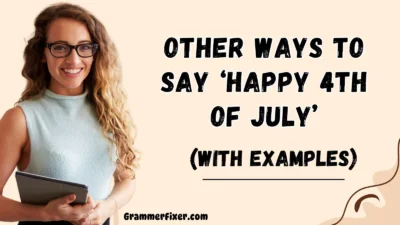Words carry power—especially in academic, professional, or sensitive discussions. Choosing the right phrase can help you connect more deeply with your readers, avoid sounding repetitive or mechanical, and bring more warmth, clarity, and thoughtfulness to your communication.
Whether you’re analyzing a novel, summarizing research, or simply trying to vary your writing, this guide offers empathetic, professional, and creative alternatives to the phrase “The text states.”
What Does “The Text States” Mean?
“The text states” is a common phrase used to introduce a direct quote or reference from a written source. It usually signals that the following information is factual, objective, or directly sourced from the material being analyzed.
It’s frequently used in academic writing, literary discussions, or analytical essays to support a claim.
Is It Professional or Polite to Say “The Text States”?
Yes, but with caveats. While it’s professional, it can also come across as repetitive, robotic, or lacking nuance when overused. In formal contexts, it’s acceptable, but for more engaging, thoughtful, or empathetic writing, variation helps maintain reader interest and relatability.
Advantages or Disadvantages
Advantages:
- Clear and direct
- Appropriate for academic, legal, or instructional writing
- Shows authority and reference accuracy
Disadvantages:
- Can sound monotonous or dry
- Lacks emotional depth or personable tone
- Overuse leads to unsophisticated writing
1. According to the Text
Meaning: Indicates that information is being drawn directly from the referenced material.
Explanation: A gentle and polished way to acknowledge the source without sounding too rigid.
Example: According to the text, sea turtles have been around for over 100 million years.
Best Use: When you want a neutral, professional tone.
Tone: Academic, informative, objective
2. The Passage Suggests
Meaning: Shows the text offers an implied or interpretive insight.
Explanation: Useful when analyzing underlying meanings or subtle themes.
Example: The passage suggests that the protagonist’s silence represents internal conflict.
Best Use: In literary analysis or essay discussions.
Tone: Reflective, interpretive, thoughtful
3. The Author States
Meaning: Attributes the information directly to the writer of the text.
Explanation: Highlights the authority and intention behind the message.
Example: The author states that renewable energy is essential for long-term sustainability.
Best Use: For nonfiction or informative pieces.
Tone: Factual, authoritative, clear
4. As Mentioned in the Text
Meaning: Refers back to something already noted in the content.
Explanation: Useful for building cohesion and referencing ideas without repeating quotes.
Example: As mentioned in the text, habitat loss remains a major threat to marine life.
Best Use: In analytical or summary paragraphs.
Tone: Subtle, polite, informative
5. The Text Highlights
Meaning: Points out what the text gives emphasis to.
Explanation: Great for drawing attention to key ideas, themes, or facts.
Example: The text highlights the emotional impact of displacement on refugee families.
Best Use: When discussing important or central themes.
Tone: Emphatic, focused, insightful
6. The Text Indicates
Meaning: Suggests a logical or factual point supported by the text.
Explanation: A more technical or objective-sounding variation.
Example: The text indicates that six of the seven species of sea turtles are endangered.
Best Use: For scientific, academic, or legal writing.
Tone: Analytical, neutral, precise
7. The Author Reveals
Meaning: The writer discloses or uncovers key information.
Explanation: Adds a storytelling or narrative tone to the reference.
Example: The author reveals the character’s hidden motivation in the final chapter.
Best Use: In creative writing, literary analysis, or book discussions.
Tone: Narrative, emotional, engaging
8. The Passage Alludes To
Meaning: Implies a subtle, indirect reference or meaning.
Explanation: Used when discussing symbolism or philosophical ideas.
Example: The passage alludes to classical mythology through its imagery.
Best Use: In advanced literature studies or interpretive essays.
Tone: Elegant, analytical, thought-provoking
9. The Writing Describes
Meaning: Focuses on imagery, details, or events.
Explanation: Ideal for describing narrative passages or descriptive scenes.
Example: The writing describes the coastal landscape with vivid sensory detail.
Best Use: When analyzing literary settings or atmosphere.
Tone: Descriptive, warm, fluid
10. The Section Mentions
Meaning: References a specific part of the text.
Explanation: A simple, clear, and non-intrusive alternative.
Example: The section mentions that sea turtles return to the same beach where they were born to nest.
Best Use: For structured documents, manuals, or research papers.
Tone: Neutral, organized, brief
11. The Article Reports
Meaning: Presents documented information or news from the source.
Explanation: Appropriate for journalistic, factual, or research-based contexts.
Example: The article reports that plastic pollution is one of the leading causes of marine life endangerment.
Best Use: In news writing, technical documents, or research summaries.
Tone: Factual, objective, professional
12. The Text Emphasizes
Meaning: Points to what the author considers important or worthy of attention.
Explanation: Adds a layer of significance or urgency to a statement.
Example: The text emphasizes the importance of investing in renewable energy.
Best Use: When analyzing themes, values, or calls to action.
Tone: Strong, persuasive, intentional
13. The Passage Explains
Meaning: Indicates the text is clarifying or providing instruction.
Explanation: Helps readers understand a process or break down a concept.
Example: The passage explains the stages of sustainable farming.
Best Use: For educational, expository, or teaching purposes.
Tone: Instructive, clear, supportive
14. The Content Describes
Meaning: Focuses on what is being depicted or illustrated.
Explanation: Works well in summaries or literary critiques.
Example: The content describes the migration journey of sea turtles in detail.
Best Use: In reports, narrative reviews, or research outlines.
Tone: Neutral, observational, factual
15. The Paragraph Demonstrates
Meaning: Shows how a particular point is supported or illustrated.
Explanation: Highlights evidence, proof, or examples within the text.
Example: The paragraph demonstrates how climate change affects biodiversity.
Best Use: In analytical writing, presentations, or theses.
Tone: Explanatory, structured, analytical
16. The Author Suggests
Meaning: Implies a recommendation, insight, or possibility.
Explanation: Indicates a more subjective or interpretive stance.
Example: The author suggests that the protagonist’s journey mirrors societal change.
Best Use: For essays, book clubs, or philosophical discussions.
Tone: Gentle, reflective, introspective
17. The Quote Shows
Meaning: Uses a quotation to support or clarify a point.
Explanation: Common in academic essays and literary analyses.
Example: The quote shows how resilient the character becomes in the face of adversity.
Best Use: When referencing textual evidence.
Tone: Clear, supportive, concise
18. The Passage Clarifies
Meaning: Helps the reader better understand or remove ambiguity.
Explanation: Strong for analyzing complex ideas or conceptual language.
Example: The passage clarifies the relationship between biodiversity and soil health.
Best Use: In teaching, essays, or guides.
Tone: Educational, soft, helpful
19. The Statement Reflects
Meaning: Indicates insight or philosophical depth from the author.
Explanation: Adds emotional or intellectual weight to a point.
Example: The statement reflects the author’s stance on environmental justice.
Best Use: For persuasive writing, essays, or editorials.
Tone: Personal, thoughtful, persuasive
20. The Text Unveils
Meaning: Brings something to light that may not have been obvious at first.
Explanation: Often used in analytical or deep reading exercises.
Example: The text unveils the underlying grief experienced by the main character.
Best Use: For literary analysis or introspective writing.
Tone: Insightful, emotional, layered
21. The Passage Defines
Meaning: Provides a clear explanation or formal meaning.
Explanation: Best for technical, academic, or instructional writing.
Example: The passage defines organic farming as a method free from synthetic inputs.
Best Use: In textbooks, manuals, or lectures.
Tone: Precise, structured, instructive
22. The Sentence Reinforces
Meaning: Repeats or strengthens a previously made point.
Explanation: Useful for emphasizing consistency or clarity.
Example: The sentence reinforces the urgency of climate action.
Best Use: In conclusions, summaries, or theses.
Tone: Firm, direct, logical
23. The Author Argues
Meaning: Expresses a position or persuasive point of view.
Explanation: Best for texts with subjective, opinionated, or debated topics.
Example: The author argues that investing in solar power is a moral imperative.
Best Use: In editorials, academic essays, or debates.
Tone: Strong, assertive, opinionated
24. The Excerpt Reveals
Meaning: Brings out a hidden detail, emotion, or theme.
Explanation: Effective when discussing literary depth or narrative arcs.
Example: The excerpt reveals the character’s longing for their homeland.
Best Use: In book reviews, storytelling, or film studies.
Tone: Emotional, subtle, evocative
25. The Text Demonstrates
Meaning: Clearly shows or illustrates a concept or idea.
Explanation: Emphasizes how the evidence supports a point.
Example: The text demonstrates how deforestation contributes to habitat loss.
Best Use: In scientific, informative, or educational writing.
Tone: Direct, evidence-based, clear
26. The Passage Shows
Meaning: Points out a visible or observable element in the text.
Explanation: Works well in casual or conversational analysis.
Example: The passage shows how the setting influences the characters’ emotions.
Best Use: In book clubs, student essays, or discussions.
Tone: Friendly, accessible, conversational
27. The Writer Expresses
Meaning: Shows the personal voice, opinion, or feelings of the author.
Explanation: Adds a more empathetic, subjective tone.
Example: The writer expresses deep concern over environmental degradation.
Best Use: In op-eds, emotive writing, or editorials.
Tone: Warm, thoughtful, engaged
28. The Text Articulates
Meaning: Carefully and clearly conveys a complex idea.
Explanation: Highlights the skillfulness or precision of the writing.
Example: The text articulates the interconnectedness of ecosystems.
Best Use: In academic writing, presentations, or literary critique.
Tone: Sophisticated, clear, analytical
29. The Passage Points Out
Meaning: Directs attention to a specific fact, detail, or issue.
Explanation: Often used to show clarity or emphasis in argumentation.
Example: The passage points out that rising sea levels threaten coastal cities.
Best Use: In discussions, presentations, or editorial work.
Tone: Direct, factual, pointed
30. The Author Makes the Case
Meaning: Builds an argument or provides evidence to support a position.
Explanation: Shows the intentional persuasion or logical structure of the author’s stance.
Example: The author makes the case that sustainable agriculture can address food insecurity.
Best Use: In academic essays, policy writing, or debates.
Tone: Convincing, professional, structured
Conclusion
Choosing the right words is more than just a technical task—it’s about building connection, encouraging understanding, and writing in a way that resonates. These 30 alternatives to “The text states” offer flexibility, tone variety, and emotional depth, making your communication feel more human, empathetic, and professionally articulate.
Whether you’re working on an academic paper, preparing for classroom discussions, or crafting a business report, using diverse expressions helps your message stand out, remain engaging, and communicate meaning with clarity and warmth.



